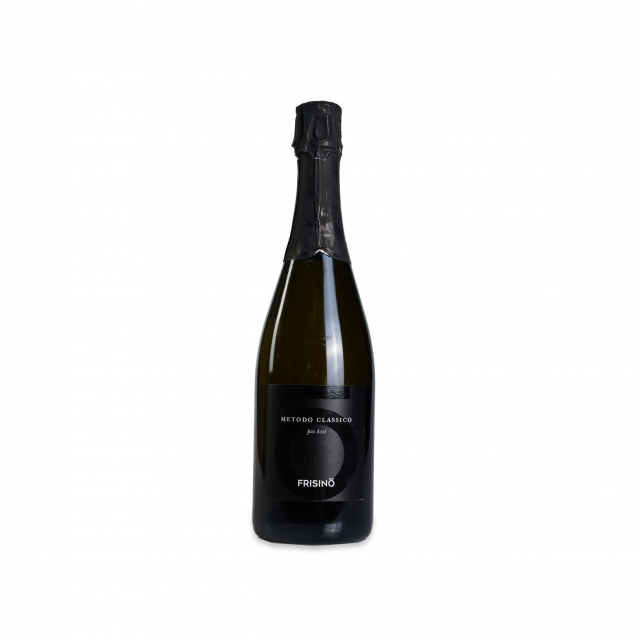Tuna: Benefits, Types, and Pairings for a Complete Culinary Experience
Types of Tuna
Tuna and its various types are among the most prized ingredients in the kitchen, thanks to their versatility in pairings. To make the most of this ingredient, it's essential to understand the different varieties available to choose the right one for your recipes. Red tuna (Thunnus thynnus) is one of the most sought-after and valuable, known for its rich flavor and high-quality flesh. Other common types of tuna include yellowfin tuna (Thunnus albacares) and albacore tuna (Thunnus alalunga). Each type has unique characteristics that make it ideal for different culinary preparations. For instance, red tuna is often used for sushi and sashimi, while yellowfin tuna is perfect for salads and grilling.
Health Benefits of Tuna
Tuna is an excellent source of Omega-3 fatty acids, known for their numerous health benefits, including improved cardiovascular health and nervous system function. Additionally, it is rich in high-quality protein, B vitamins, and minerals like selenium. Incorporating tuna into your diet can contribute to better heart health, healthy skin, and a robust immune system. Discover how tuna can be a healthy choice for you and your family.
Tuna Recipes
Tuna is extremely versatile in the kitchen. Here are some ideas to make the most of it:
- Tuna Salads: Prepare a fresh salad with red tuna, mixed vegetables, and a light dressing.
- Sushi and Sashimi: Red tuna is ideal for sushi and sashimi due to its texture and intense flavor.
- Tuna Pasta: Try a pasta dish with tuna, cherry tomatoes, and olives for a simple yet tasty meal.
- Canned Tuna: Canned tuna recipes are perfect for quick meals, like sandwiches and salads.
Canned Tuna vs. Fresh Tuna
When choosing between canned tuna and fresh tuna, it's important to consider the advantages and disadvantages of each. Canned tuna is convenient, has a long shelf life, and can be used immediately. However, fresh tuna offers superior flavor and texture and can be prepared in a variety of ways. Discover the differences between fresh and canned tuna to choose the option that best suits your culinary needs and preferences.
Sustainable Tuna
Sustainability is crucial when choosing tuna, as irresponsible fishing can have severe negative impacts on the marine environment and fish populations. Opting for sustainable tuna means selecting products obtained through fishing methods that minimize environmental impact and promote the health of marine ecosystems.
What Does Sustainable Fishing Mean? Sustainable fishing relies on practices that ensure fish stocks are not exploited beyond their natural reproduction rates. This includes techniques that minimize bycatch (unintended capture of other marine creatures), use gear that does not damage marine habitats, and adhere to international catch limits.
Certifications and Labels: To ensure that the tuna you purchase is genuinely sustainable, look for certifications from recognized organizations like the Marine Stewardship Council (MSC) and the Aquaculture Stewardship Council (ASC). These labels indicate that the tuna comes from sources that meet rigorous environmental and social standards.
Benefits of Sustainable Fishing: Choosing sustainable tuna helps conserve fish species and their habitats, supports fishing communities that adopt responsible practices, and promotes long-term fishing practices without depleting natural resources. Additionally, supporting sustainable practices ensures that future generations can continue to enjoy the benefits and flavors of tuna.
How to Make the Right Choice: When buying tuna, educate yourself about the product’s origins and seek transparency in labeling. Prefer retailers and producers that offer detailed information on fishing practices and commit to sustainability standards. Investing in sustainable tuna is a conscious choice that reflects your commitment to environmental protection and global sustainability.
Cooking and Wine Pairings with Tuna
Tuna, with its rich and flavorful flesh, is a versatile ingredient that lends itself to a wide range of culinary and wine pairings. Discovering the right pairings in the kitchen and with wine can enhance the flavor of tuna and turn your dishes into memorable culinary experiences.
Cooking Pairings:
- Grilled Vegetables: Tuna, especially red tuna, pairs perfectly with grilled vegetables like zucchini, bell peppers, and eggplant. The light smokiness of the vegetables complements the richness of the tuna, creating a delicious balance.
- Fresh Salads: Combine tuna with fresh salads featuring leafy greens, cherry tomatoes, and cucumbers. A light dressing with olive oil and lemon enhances the freshness of the tuna and vegetables for a summery pairing.
- Pasta and Risotto: Tuna can be a great ingredient for pasta and risotto dishes. For a tuna pasta dish, add cherry tomatoes and black olives for a Mediterranean touch. In risottos, tuna pairs well with flavors like fresh herbs and citrus.
- Sushi and Sashimi: Red tuna is a key ingredient in sushi and sashimi. Its texture and rich flavor make it ideal for these raw dishes, served with soy sauce and wasabi.
Wine Pairings:
- Dry Whites: Tuna pairs wonderfully with dry white wines such as Sauvignon Blanc and Pinot Grigio. These wines, with their fresh and citrusy notes, balance the richness of the tuna and cleanse the palate.
- Rosés: If you prefer a rosé, choose a fresh and fruity Rosé. Its light aromas and moderate acidity are perfect for enhancing the flavor of the tuna without overpowering it.
- Light Reds: For grilled or baked tuna preparations, you can also opt for a light red wine like Pinot Noir. Its soft tannins and delicate aromatic profile pair well with cooked tuna.
Tips for Perfect Pairing: When pairing tuna with wines and dishes, consider the preparation and seasonings used. Dishes with rich sauces or spicy ingredients may require wines with a more intense aromatic profile. Experiment with different combinations to find the pairing that best enhances your tuna dishes.
The right pairings in the kitchen and with wine can turn a simple tuna preparation into a gourmet experience. Whether you're making a light salad or a gourmet sushi dish, choose pairings that enhance the flavor of the tuna and make each meal special.
Explore our selection of high-quality tuna! Visit our online catalog to discover a wide range of top-brand italian tuna products for your perfect pairings!
Discover Tuna Devoro's selection
Tuna Storage and Shelf Life
To ensure that tuna maintains its flavor and freshness, it is essential to follow proper storage practices. The method of storage can vary depending on whether the tuna is fresh or canned, and understanding these aspects will help you get the most out of your product.
Storing Fresh Tuna:
- Refrigeration: Fresh tuna should be stored in the refrigerator. Ensure that the refrigerator temperature is kept at 0-4°C to prevent bacterial growth. Use airtight containers or wrap the tuna in plastic wrap to reduce air contact and maintain freshness.
- Prompt Consumption: Fresh tuna is highly perishable and should be consumed within 1-2 days of purchase. If you do not plan to use it immediately, it is best to freeze it to extend its shelf life.
- Freezing: If you decide to freeze the tuna, do so immediately after purchase. Use freezer bags or airtight containers and label the date of freezing. Tuna can be stored in the freezer for up to 3 months without losing quality. For optimal food safety, thaw the tuna in the refrigerator, not at room temperature.
Storing Canned Tuna:
- Shelf Life: Canned tuna has a much longer shelf life compared to fresh tuna. Once purchased, it can be stored at room temperature until the expiration date indicated on the can.
- Post-Opening Storage: After opening a can of tuna, transfer the contents to an airtight container and store it in the refrigerator. Opened canned tuna should be consumed within 3-4 days.
- Quality Check: Even though canned tuna has a long shelf life, it's important to check the product before use. Ensure that the can is not dented, bulging, or rusted, and that the contents do not have an off odor or unusual appearance.
Storage Tips:
- Cleanliness and Hygiene: Always maintain a clean environment for storing tuna, whether fresh or canned. Ensure that the refrigerator and containers are well-cleaned to prevent contamination.
- Regular Checks: Regularly check expiration dates and the condition of the tuna. Do not consume products showing signs of spoilage or that are past their expiration date.
Following proper tuna storage practices is crucial to maintaining the quality and safety of the product. With appropriate storage, you can ensure that the tuna remains fresh and flavorful, ready to be used in delicious culinary preparations.



